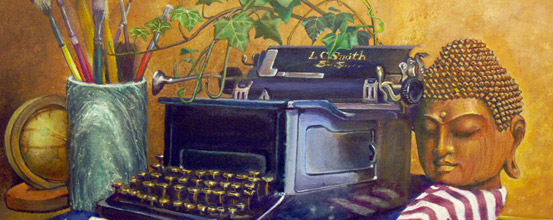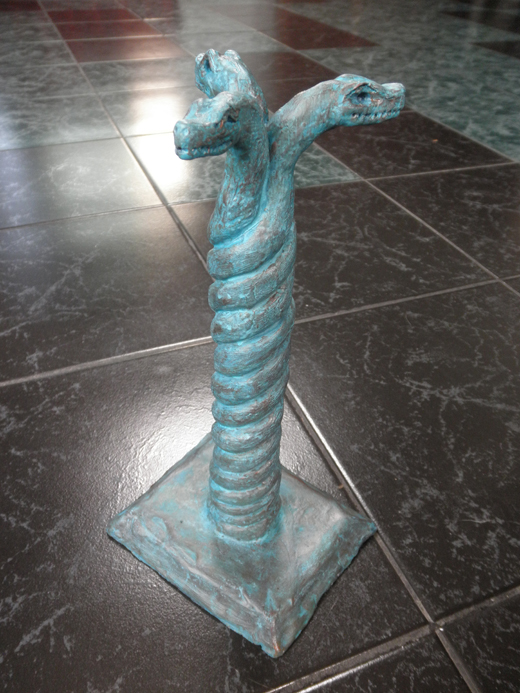Interview with Glen Phillips of Toad the Wet Sprocket
Toad the Wet Sprocket Interview
By Doktor John

Modern rock. Alternative rock. Indie Rock. No band epitomizes those terms or is a better representative of the breakaway style of music that spanned the two decades which straddle the year 2000.
Starting out in the 80s as a high school garage band in the Santa Barbara area, Toad the Wet Sprocket was aiming for nothing more than “open-mic†success. Yet in the early 90s, Toad climbed from the obscure college music scene into the mainstream.
Independent and aided by ASCAP (The American Society of Composers Authors and Publishers) they produced two albums, Bread and Circus and Pale. Eventually signing with Columbia, Toad reached an early pinnacle, scoring two platinum albums, Fear and Dulcinea and placed songs on such notable movie soundtracks as “So I Married an Axe-Murderer†and onto the TV soundtracks of “Friends†and “Buffy the Vampire Slayer.â€
Splashy guitars, letter-perfect arrangements and Glen Phillips’ plaintive vocals impart a unique, melancholy sound that is somewhere between heavy and soft-rock, driving such unforgettable singles as “Walk on the Ocean†and “Fall Down.â€
Oh, and the wildly incongruous name, Toad the Wet Sprocket, was chosen from an absurdist Monty Python skit.
I caught Glen Phillips on the phone this March and found him a thoughtful person, mild-mannered and intellectual, but with understandably unsettled feelings about the future prospects for musicians.
It’s my understanding that you established Toad in 1986
Right around that time, although Todd and I had been playing and writing songs, together maybe from 1985
When you were only—how old were you?
We were in high school. I was a freshman, they were seniors, in a regular public high school.
Now the other members of the group, Todd, Dean and Randy, how were the four of you acquainted?
They all knew each other growing up. Some of the guys, they went to the same church. Todd had the guitar.
You studied music in school?
Apart from being in choirs, no. I got fired by my guitar teacher because I wasn’t any good at following directions. It was just your average band formed by high-schoolers who got together to play, practicing in garages and we called it a band.
How did it transform into a serious music group?
This was one club around town, called “The Shackâ€, close to where we lived, which helped, because my dad would drive me there
The guy who ran it didn’t want to pay any performance rights to ASCAP, so you weren’t allowed to play covers there. At every other club you had to do covers, but we were at the one club where you had to do originals. So we started writing a lot early on and so developed those skills just out of necessity. In that sense we were very lucky.
Who actually writes Toad’s songs?
It depends. I write some of the songs. Todd and I write some together. He might come in with music and I might add a part. Since we broke up Todd and Dean have kind of become a writing team. Sometimes I just kind of finish things up after they’ve written a song.
While on the subject of creativity, what were your influences? Where does your unique sound come from?
I have no idea. In those days we were listening to everything, including, certainly, the Beatles. In high school I was really into Rush. Before that, in grade school I was into disco. When we started Toad I’d gotten into metal and into punk.
Can you name any other artists or groups that you were listening to when it dawned on you that you had the wherewithal to create your own stuff?
Todd really turned me on to post-punk bands like Husker Du and the Replacements, a little of Elvis Costello. Basically a lot of stuff with that punk energy but with a much more literate bent.
In those days there was a genre that preceded the term “alternative rock” and it was “College Radio.” How did you and the group relate to that genre, if you recognize it as such?
At that time, Nirvana, and with it the term “alternative,†had not yet broken onto the scene, but what had been college radio was starting to enter the mainstream. I could see that my private stash of music had suddenly become public.
You guys really hit it big in the 90s. Were you shooting for that level of success and recognition in the music world?
No. I kind of knew early on what I wanted and it was not to get into anything competitive, into self-promotion or selling myself in any sense. I had a drama teacher and I saw that he became a teacher because he loved teaching and the theater. He didn’t want to be a salesman for himself and summon all that ego and the drive of pursuing whatever it is that pushes people.
You used him as a role model?
Yeah, so I just was playing music for whatever, but I just wanted to go to school, go to college and then become a teacher.
In what? Music?
Yeah, that or even social sciences. I thought I might go into cultural anthropology. That side of things really moved me.
And so, we had the band, and the first two records were made completely independently, and we put them out in town, and we had a lot of fun playing and we assumed that like a summer it would end I was moving up to San Francisco to go to college and the band was going to break up.
But what happened was there was this friend of a friend, Nick, from ASCAP who liked our tapes. I didn’t even know him at the time. He was dubbing copies of our tapes in his office and sending them off to record companies. And then I got signed when I was 18.
He apparently had good musical taste. He knew that it was good stuff!
Yeah and that’s the great thing about ASCAP. It’s a great organization and they really help. We would never have had the drive or ambition on our own without them.
Just as an aside, when we broke up, I had to suddenly manifest that drive, and I’ve been really bad at it!
So who in the band is then responsible for pushing the success of Toad?
We all have an artistic drive, or ambition for our music, and we’ve been lucky that it has gotten us as far as it has, because none of us is very good at the business part of it.
That attitude of “take us as we are†is evident in the music.
Sometimes our sound is embarrassingly earnest. (laughs)
In a way that’s why we have our audience, because when we came out people were competing so hard to be “heavy.†When we first started to get play on the radio it would be next to Hole or Green Day or Henry Rollins. It’s like we were making music for nerds when it wasn’t fashionable to be a nerd.
Toad has a couple of platinum albums and is featured on movie and TV soundtracks but somehow remains just below the mainstream radar. What’s that like?
I suppose it’s nice that way. On the other hand, everybody would like to be a little more successful. But when we were more recognizable, it used to make me nervous. But a little notoriety goes with success. When I went independent and solo—and so I was less well known— I felt like I had to always audition for my job.
What form of success would you really like?
Stability. Like having the same management for more than just one album. I’m not counting on labels anymore, because that’s to a large degree gone. And I no, I won’t waste my time being bitter. I guess I just want to be able to make a living making music I’m proud of. I’m not young and I’m not without responsibilities anymore.
Doesn’t everybody want to be a rock star?
I think wanting to be a rock a star is one of the lamest, lowest desires in the world. I really don’t get kids wanting to be famous for fame itself. There are people— nobodies, really, like the Kardashians—who are famous just for being famous.
You mentioned responsibilities. You have kids?
Yes, three.
And based on your knowledge of the field, would you advise them— if they have the aptitude—to go into music?
I would advise them to follow their passion. But, no, I wouldn’t advise them to go into music as a career. They work at gymnastics, my kids—on the trapeze and such—and they learn from it that you need to work harder at whatever you want to excel at.
What’s your take on the future of the recording industry?
Humans been making music longer than we’ve been talking, and record companies are based on very recent technology when you look at it in terms of human history. I just feel that the recording industry is just a weird technological blip. People made music and people listened to music long before there was a music industry. At this point musicians can’t be monetized in the same way that they have been.
It’s a different world.
People will still make music. People will still want to hear music. We need to figure out new ways of how we distribute it and how make a living out of it.
So what’s the solution as you see it?
People are going to have to go back to seeing themselves as patrons of the arts. It’s not about album sales anymore. You can’t make a living selling records.
Maybe fans with a sense of stewardship will form collectives. There’s this concept of a “home concert community.â€
Some are coming to realize that people nowadays are basically stealing music. Musicians have still got to eat. Maybe artists are going to have to live on the proceeds of live performances. We’ve done our share, sometimes performing at a hundred live shows in a year. Keep in mind that this isn’t Canada or Scandinavia where the government issues grants to performing artists.
Finally, let’s talk about more mundane and imminent issues. When will Toad the Wet Sprocket go on tour?
We’re just about to start a nationwide tour. We’ll be in New York at Irving Plaza on April 7.
What’s going to be on the playlist?
There will be a lot of the familiar stuff that is known and that people want to hear, but since last year we started writing again as a band. There’ll be a couple of new songs, and a couple of songs off of the solo records.
Is the new material intended to go into a new album? Is an album in the works?
We’re really early in the writing process and won’t likely even start recording for a new album until next year.
Who do you like that’s out there now?
There’re still great artists out there in the mainstream. I think of Mumford & Son, Death Cab for Cutie, Arcade Fire and MGMT.
And the future for Toad the Wet Sprocket?
Creatively, at this time, we’re at a high point.
It’s been great catching your insights on these things.
Thanks.








































